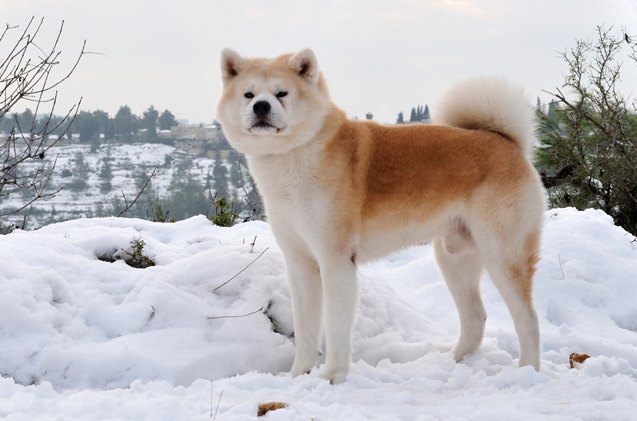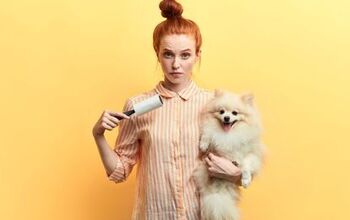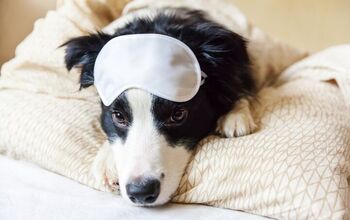Akita


About Akita
With its bear-shaped head and curly tail, the Akita is easy to pick out in a crowd. A regal and elegant dog, the Akita is a pleasure to look at, thanks in part to a tail that sweeps over the top of its back into a gentle curl, adding to its classical style.
Even though it’s a quiet dog by nature (this breed is known as the “Silent Hunter” in Japan), the Akita will keep a lookout and let you know if someone gets too close to your house. With a temperament that can range from calm to bouncy to aggressive, this breed will flourish in the right kind of household. Read on to see if this breed is the right fit for your family.
With its bear-shaped head and curly tail, the Akita is easy to pick out in a crowd.
An old Japanese breed, the Akita was used for many purposes, from guarding emperors to participating in the hunt. WWII, its numbers dwindled as the armies killed them to use its coats for warmth.
Considered the largest of the Japanese Inu breeds, the Akita is a national treasure in its country of origin. Families would use this gentle dog to babysit while parents worked in the grain fields and hunted wild game, proving it is an extremely versatile breed.
One of seven breeds designated as a national monument in Japan, the Akita is considered as the most primitive of Japan’s ancient breeds. This Japanese dog’s origin date is unknown, but the Akita arrived to America in 1937 when Helen Keller returned with one from her trip to Japan.
The Akita was recognized by the AKC in 1972.
Akitas do well with fresh food, free of preservatives. A diet of cooked meat and fish, supplemented by fruit and quality supplements will keep your Akita is high spirits. Avoid the “all dog” foods, many of which are full of preservatives. If you are going to go with a store-bought food, make sure it’s a high-quality and check the ingredients to see what it is made of.
With a temperament that can range from calm to bouncy to aggressive, the Akita will flourish in the right kind of household.
A large breed, the Akita needs a strong owner/trainer since it has a strong will and tends to be stubborn. At the first sign of weakness, this dog will assume an alpha attitude over subordinate owners. An intelligent dog, it doesn’t take long for this breed to pick up on training, which can prove to have positive and negative repercussions. Your Akita will become bored easily, so provide enough mental and physical stimulation.
Akitas work best on a daily routine, so it learns what is expected. As a puppy, start with basic commands, and work your way up to more complex lessons as your dog approaches the age of four to six months
Male Akitas weigh 75 to 120 pounds, while females weigh 75 to 110 pounds.
A real people-dog, the Akita is a social breed that prefers being part of a pack rather than being alone. A clean and intelligent dog, you will find the Akita easy to housebreak.
Akitas also have a tendency to take the alpha role over other animals. This breed doesn’t like to be alone, and if left on its own for too long, it will become bored. You may find that your dog will develop an intense owner attachment where it will not want to leave your side.
This breed likes children, and it is gentle and patient. However, the Akita may have a possessive attitude toward children in its family and may try to protect the child from other pets or animals. Socialization to other animals should start as soon as possible, which will prevent aggression.
Some health problems the Akita may suffer from are both viral and genetic. Before you take your puppy home, be sure its parents are clean and have passed all health testing.
The two major concerns of the Akita are CHD and PRA. CHD (canine hip dysplasia) is a condition where the hip socket does not operate well, which causes instability inside the hip joint. PRA (progressive retinal atrophy) is a gradual deterioration of the dog’s retina. It starts with night blindness and progresses to total blindness.
Akitas have a life expectancy of 10 to 12 years.
The Akita is a strong and athletic dog, and can be used in weight pulling activities or sledding. These exercises are not recommended until the dog is over one year old, in order to completely develop muscles and bones.
It helps if you have a large backyard where your dog can get out and play. If you have more than one dog, you’ve got an instant exercise mate for your Akita. And you can supplement playtime with a daily brisk walk or jog.
A real people-dog, the Akita is a social breed that prefers being part of a pack rather than being alone.
The American Kennel Club says this about the breed: “Large, powerful and alert, the Akita is a working breed that originated in Japan. Dignified and courageous, the Akita today is popular in the show ring and also participates in performance and therapy work.”
The muscular shape of the Akita is enhanced by a beautiful thick double-coat. Sporting medium-length fur, the coarse and heavy outer coat offers protection from the water. The wool and dense undercoat protects against weather extremes.
The coat can vary with brindle, white, sesame, and red fawn colors, as well as a certain amount of white splashed over the body. The double coat will require weekly brushings using a grooming-comb and a steel pin-brush. Your Akita’s coat doesn’t require trimming or shaving, but this dog will “blow” its coat twice a year. This lasts a couple of weeks, usually early in the spring and in the early spring or early fall/late summer.
Start training and socialization as soon as your Akita puppy comes to live with you. Strenuous exercise shouldn’t be undertaken until your dog is about one year old.
Photo credit: PardoY/Shutterstock

Amy Tokic, Editor of PetGuide.com, is a passionate animal lover and proud pet parent of Oscar, a Shih Tzu/Chihuahua cross, and Zed, a Japanese Chin. Her love of animals began in kindergarten, when she brought her stuffed dog Snoopy into class with her every day. Now, she writes about her adventures in pet ownership and tirelessly researches products, news and health related issues she can share with other animal enthusiasts. In her free time, Amy loves perusing used book and record stores, obsessing over the latest pet products available and chasing squirrels with wild abandon (a habit attributed to spending too much time with her pooches).
More by Amy Tokic
























